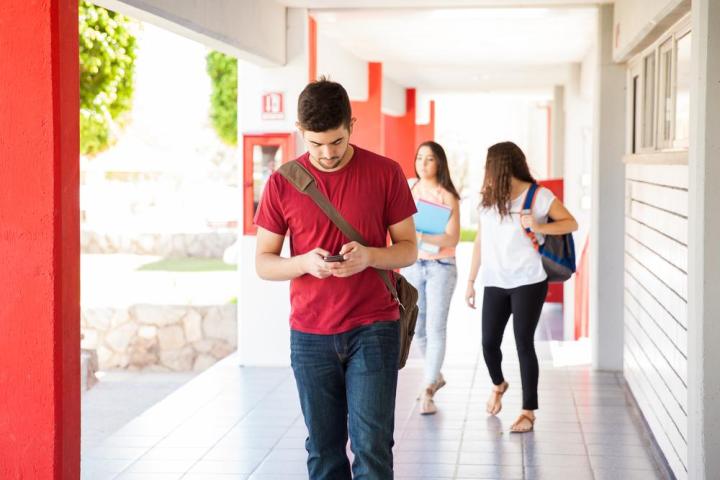
According to a recent Pew Research Center study regarding Americans’ views on acceptable cell phone behavior, most of us (77 percent) believe that walking (or zigzagging, really) down the street while on your phone is totally acceptable, whereas only 4 percent give the green light to being on your phone at church. It’s also alright to use your phone on public transportation or while waiting in line, 75 and 74 percent of Americans say, respectively, but if you’re at a restaurant or family dinner, you might wanna put your iPhone down.
Granted, it seems as though the majority of situations in which cell phone usage is deemed ok are those when users are solitary — when they’re in public, but not interacting with others. That may be because most Americans, 82 percent of them, believe that cell phone usage “frequently or occasionally hurts the conversation” in social situations. Of course, that hasn’t stopped many people from sneaking a glance at a text or sending a quick email even when surrounded by friends and family. In fact, 89 percent of cell phone owners admitted to using their cell phone at their most recent social gathering.
That being said, the majority of those who were on their phones were actually doing something related to the group activity, like taking a photo or sharing information. A much smaller percentage (16 percent) decided to start browsing the Internet because they were bored or disengaged from the conversation or activity at hand.
All in all, it’s an interesting commentary on a generation for whom connectivity appears to be both a gift and a curse. Cell phones, meant to make us constantly accessible, may to some degree be making us perpetually inaccessible, particularly to the people we’re physically close to. The almost obsessive need to be forever in the know has lent itself to a sort of half existence — one foot in the digital sphere, one foot in reality. And as our reliance on cell phones grows, perhaps the delineation between the virtual and the actual world will continue to blur.
Until then, feel free to text and walk, since that’s generally fine. But when you’re at the movies, keep that phone in your pocket and on silent.
Editors' Recommendations
- Nomad’s new iPhone case and Apple Watch band may be its coolest yet
- Here’s how Apple could change your iPhone forever
- This Google Pixel 8a leak just spoiled everything about the phone
- Everything Apple says is wrong about the DOJ’s iPhone lawsuit
- An Android phone you haven’t heard of just won the charging game


